New York has always been more than skyscrapers and Adirondack forests—it’s a living laboratory for ecological inquiry. Across its diverse landscapes, from the Hudson Valley’s riparian corridors to the urban greenways of New York City, wildlife researchers are decoding how animals persist, migrate, and adapt in the Anthropocene.
In preparing this 2025 edition, I reviewed field studies, institutional projects, and peer-reviewed publications emerging from New York’s universities, conservation nonprofits, and state programs. What stands out is not just the caliber of science but the breadth of its application: researchers here are tracking everything from coyote genetics in the Bronx to the health of riverine fish in the Adirondacks.
Each scientist featured below represents a distinct perspective—field biologists, data modelers, conservation leaders—but all share one mission: understanding wildlife in a state where wilderness meets one of the world’s most densely populated urban zones.
🌿 New York: Where Urban Ecology Meets Wild Landscapes
Few regions in the United States compress such ecological variety into a single state. To the north, boreal forests host moose, lynx, and loons. Southward, coastal marshes serve as stopovers for migratory birds, while Central Park’s woodlands sustain breeding hawks and adaptable mammals.
This juxtaposition—urban complexity beside natural resilience—has made New York a cornerstone for studying wildlife adaptation. Researchers here collaborate across government agencies, universities, and citizen-science groups, producing insights that travel far beyond state borders. Their findings influence federal recovery plans, shape climate-resilience models, and redefine what coexistence between humans and wildlife looks like in the twenty-first century.
🧠 Notable Wildlife Researchers in New York (2025)
1. Dr. Angela K. Fuller – Quantitative Ecologist Bridging Data and Conservation
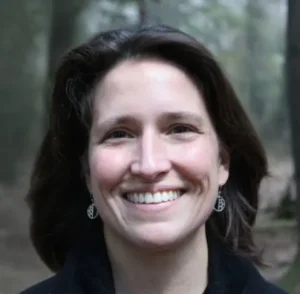
Affiliation: Leader, New York Cooperative Fish and Wildlife Research Unit (USGS) & Professor, Department of Natural Resources and the Environment, Cornell University.
Location: Ithaca, New York
Dr. Angela Fuller stands at the intersection of applied conservation and quantitative ecology. Her research focuses on how landscape changes, habitat connectivity, and climate pressures influence mammal populations — particularly carnivores such as fishers, martens, and black bears.
Through multi-year telemetry studies and spatial modelling, Dr. Fuller’s team has advanced methods for predicting species distribution across fragmented environments. Her cooperative work with the New York State Department of Environmental Conservation ensures that research outcomes translate into tangible management strategies.
Colleagues frequently describe her approach as data with purpose — a blend of rigorous analytics and on-ground conservation application. In an era when wildlife decisions must be guided by evidence, Dr. Fuller’s contributions have set a benchmark for integrating ecological data with policy relevance.
Research Themes: carnivore ecology, spatial modelling, conservation planning
Affiliations: USGS NY Coop Unit, Cornell University
2. Dr. Chris Nagy – Mapping Urban Coyotes and the Future of City Wildlife
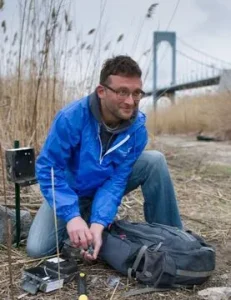
Affiliation: Director of Research & Education, Mianus River Gorge Preserve; Co-founder, Gotham Coyote Project
Location: Westchester County & New York City
While New York’s wilderness has long been studied, Dr. Chris Nagy’s work reveals a different frontier — urban ecology. Over the past decade, he has led some of the most comprehensive studies on coyote expansion throughout the New York metropolitan region.
By combining genetic sampling, camera-trap networks, and citizen-science observations, Dr. Nagy’s team has built one of the largest datasets on urban carnivores in the United States. His research does more than map animal movement; it reshapes how city planners and residents think about coexistence with wildlife.
Professionally, his work sits at a rare nexus: part wildlife biology, part community ecology, and part urban planning. As New York continues to expand green infrastructure and ecological corridors, Dr. Nagy’s findings provide a foundation for designing cities that accommodate both humans and wild species.
Research Themes: urban ecology, carnivore adaptation, community science
Affiliations: Mianus River Gorge, Gotham Coyote Project
3. Dr. Amanda Rodewald – Advancing Avian Ecology and Climate-Resilient Landscapes
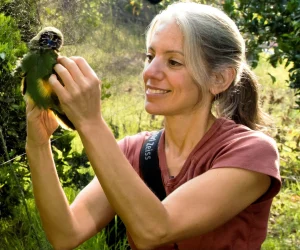
Affiliation: Senior Director, Center for Avian Population Studies, Cornell Lab of Ornithology; Professor of Ecology, Cornell University
Location: Ithaca, New York
Dr. Amanda Rodewald is one of New York’s foremost voices in avian conservation and landscape ecology. Her research investigates how land-use change, urbanization, and climate dynamics affect bird populations across the Americas.
At the Cornell Lab of Ornithology, she oversees interdisciplinary projects that link migratory bird research with agricultural sustainability and forest management policies. Her team’s work has informed both U.S. conservation legislation and Latin American reforestation strategies.
What distinguishes Dr. Rodewald’s approach is her emphasis on science in action—she consistently connects academic research with conservation practice. She also mentors early-career scientists through data-driven projects that model bird distribution and resilience under future climate scenarios.
Research Themes: avian ecology, landscape sustainability, migratory connectivity
Affiliations: Cornell Lab of Ornithology, Center for Avian Population Studies
4. Dr. Mary Pearl – Champion of Wildlife Policy and Biodiversity Education
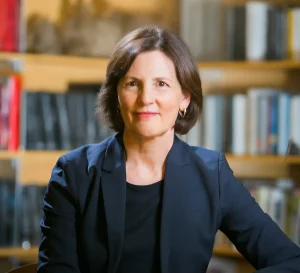
Affiliation: Former Dean, Macaulay Honors College, City University of New York (CUNY); Conservation Biologist and Author
Location: New York City
Dr. Mary Pearl’s career blends research, leadership, and public advocacy for biodiversity. Trained as a wildlife biologist, she has dedicated much of her work to promoting conservation through education, particularly in urban academic environments.
During her tenure at CUNY, she expanded programs linking students to on-ground wildlife projects across the five boroughs, focusing on wetland restoration and climate adaptation. Earlier, she served as CEO of the Wildlife Trust (now EcoHealth Alliance), integrating wildlife research with human health studies long before “One Health” became a mainstream term.
Her work reflects a rare combination of administrative insight and ecological vision—demonstrating how universities can act as catalysts for urban conservation. She continues to advise organizations on biodiversity policy and environmental education.
Research Themes: biodiversity policy, wildlife education, One Health framework
Affiliations: CUNY Macaulay Honors College, EcoHealth Alliance
5. Dr. Peter Brazaitis – Herpetologist Pioneering Reptile Conservation Practices

Affiliation: Former Curator of Herpetology, Wildlife Conservation Society (Bronx Zoo)
Location: Bronx, New York
Few wildlife scientists have shaped reptile conservation as profoundly as Dr. Peter Brazaitis. Over several decades with the Wildlife Conservation Society, he developed innovative techniques for reptile breeding, sex identification, and health assessment—methods now standard in herpetological research worldwide.
His work on crocodilian biology has guided both in-situ and ex-situ conservation programs, bridging fieldwork from the Bronx Zoo to tropical regions in Africa and Asia. Beyond research, Dr. Brazaitis has trained generations of herpetologists, contributing to species recovery plans and international wildlife-trade monitoring systems.
Professionally, he represents the pragmatic side of science—translating laboratory findings into measurable outcomes for species survival. His career demonstrates that even within urban institutions, global conservation impact can begin in New York.
Research Themes: herpetology, reptile genetics, captive-breeding conservation
Affiliations: Wildlife Conservation Society, Bronx Zoo Herpetology Department
6. Dr. Barbara A. Han – Modeling Wildlife Disease and Predictive Ecology

Affiliation: Disease Ecology Laboratory, Cary Institute of Ecosystem Studies
Location: Millbrook, New York
Dr. Barbara Han’s research is transforming how scientists anticipate zoonotic disease risk. Working at the interface of wildlife ecology and data science, her team builds predictive models that identify species most likely to transmit emerging pathogens.
By combining global wildlife datasets with machine-learning algorithms, she has shown how ecological traits and environmental change interact to influence disease spillover potential. Her findings are helping shape surveillance priorities for agencies concerned with biodiversity and public health.
Beyond her modeling work, Dr. Han is known for mentoring early-career ecologists and promoting diversity in computational ecology—a reminder that conservation today requires not only field boots but also robust code.
Research Themes: disease ecology, AI modeling, One Health analytics
Affiliations: Cary Institute of Ecosystem Studies
7. Dr. John Waldman – Champion of River Restoration and Aquatic Connectivity

Affiliation: Professor of Biology, Queens College (CUNY)
Location: New York City
For more than four decades, Dr. John Waldman has illuminated the hidden narratives of North America’s rivers. His research on migratory fish—particularly Atlantic sturgeon, river herring, and striped bass—has been instrumental in understanding how dams, pollution, and urbanization disrupt aquatic ecosystems.
According to his long-term studies, the ecological recovery of the Hudson River represents one of the region’s most powerful conservation stories. Dr. Waldman’s advocacy for dam removal and habitat connectivity continues to influence state and federal water-management policy.
He also bridges science with public communication, authoring books that translate complex ecological dynamics into accessible narratives—turning data into dialogue for both policymakers and the public.
Research Themes: aquatic ecology, river restoration, migratory fish
Affiliations: Queens College – CUNY, Hudson River Research
8. Dr. Jeremy Feinberg – Guardian of the Northeast’s Amphibian Diversity

Affiliation: Wildlife Biologist, New York State Department of Environmental Conservation (NYSDEC)
Location: Albany & New York City
Dr. Jeremy Feinberg has earned recognition for his discovery and description of the “Atlantic Coast leopard frog” (Rana kauffeldi)—a cryptic species hidden for decades among its close relatives. His ongoing research with the NYSDEC focuses on amphibian distribution, wetland health, and climate resilience across the state.
Field surveys led by his team contribute essential data for conservation planning in vulnerable wetland habitats. By blending classical fieldwork with acoustic and genetic analyses, Dr. Feinberg exemplifies how local discovery can carry national importance in biodiversity science.
Research Themes: amphibian ecology, wetland conservation, species discovery
Affiliations: NYS Department of Environmental Conservation
9. Dr. Eleanor Sterling – Integrating Culture, Biodiversity, and Conservation Ethics

Affiliation: Adjunct Professor, Columbia University; Former Chief Conservation Scientist, American Museum of Natural History (AMNH)
Location: New York City
Dr. Eleanor Sterling’s work redefines conservation through the lens of cultural context. Her interdisciplinary projects unite ecology, anthropology, and ethics—focusing on how local knowledge and community values shape biodiversity outcomes.
At the American Museum of Natural History, she led initiatives linking field biology with education and cultural heritage. Her books and programs have influenced conservation frameworks worldwide by embedding equity and inclusion into biodiversity policy.
Professionally, she embodies the modern conservation scientist: rigorous in data, reflective in ethics, and dedicated to ensuring that wildlife research serves both people and planet.
Research Themes: biocultural conservation, conservation ethics, education
Affiliations: American Museum of Natural History, Columbia University – E3B Department
10. Dr. Jason Munshi-South – Genetics of Urban Wildlife Evolution
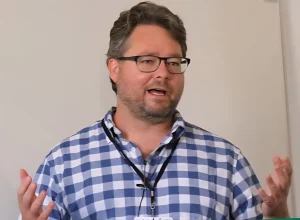
Affiliation: Professor of Biological Sciences, Fordham University; Research Associate, American Museum of Natural History
Location: Bronx, New York
Dr. Jason Munshi-South investigates how urbanization drives evolutionary change in wildlife. His genomic studies on rats, mice, and other small mammals reveal how city environments act as evolutionary filters—reshaping genetic diversity and behavior within surprisingly short timeframes.
His lab’s work contributes to a growing field known as urban evolutionary biology, combining population genetics, spatial ecology, and landscape genomics. Beyond the lab, Dr. Munshi-South is active in mentoring students and engaging the public through data-driven citizen-science projects across the Bronx and Manhattan.
In essence, he has helped redefine New York City itself as a model ecosystem—one where evolution unfolds in real time.
Research Themes: urban evolution, population genetics, adaptation
Affiliations: Fordham University, AMNH
🌎 The Landscape of Wildlife Research in New York: What These Scientists Reveal
Taken together, these ten researchers show that wildlife science in New York is far from monolithic. It stretches from genomic studies in city labs to long-term field ecology in mountain forests. Their collective work underscores three defining trends for 2025:
-
Integration of Technology and Ecology – from AI modeling to genomic mapping.
-
Urban–Wildlife Coexistence – redefining conservation in human-dominated landscapes.
-
Collaboration Across Disciplines – blending social sciences, data analytics, and traditional field methods.
Each scientist contributes a unique thread to New York’s growing network of ecological knowledge—proof that groundbreaking wildlife research can thrive anywhere, from remote wetlands to the heart of Manhattan.
🌿 Emerging Trends in New York Wildlife Research (2025 and Beyond)
Wildlife research in New York has entered an era defined by innovation, collaboration, and adaptation. While reviewing recent publications, conference sessions, and institutional reports, several patterns stand out that are reshaping how wildlife scientists approach conservation in this region.
1. The Rise of Predictive Ecology and Data Integration
Researchers are increasingly fusing field observations with computational models to forecast population shifts and ecological responses. Institutions like Cornell, the Cary Institute, and Fordham University have become leaders in using machine learning and genomic data to anticipate changes in wildlife distribution due to urban growth and climate change.
This data-driven foresight allows agencies to make more informed, proactive conservation decisions rather than reactive ones—a subtle but essential shift in modern ecology.
2. Urban Ecosystems as Living Laboratories
Few cities rival New York for its complexity of human–wildlife interaction. Projects like the Gotham Coyote Network and citizen-driven bird migration tracking have demonstrated that cities are not the antithesis of wilderness, but extensions of it.
Wildlife researchers here are documenting how species modify behavior, diet, and migration routes to thrive alongside humans. The results are influencing global urban ecology frameworks and reshaping perceptions of conservation within megacities.
3. The Integration of Public Health and Wildlife Science
The pandemic years underscored a critical link between biodiversity and human well-being. Researchers such as Dr. Barbara Han and the EcoHealth Alliance network have positioned New York at the forefront of “One Health” studies—connecting ecosystem stability to disease prevention.
Field-based data from rodents, birds, and bats now feed directly into models used by public health authorities. The cooperation between ecologists and epidemiologists has never been stronger or more necessary.
4. Cultural Dimensions and Inclusive Conservation
Modern wildlife research in New York increasingly acknowledges the human context of conservation. Scholars like Dr. Eleanor Sterling have helped weave indigenous knowledge, community education, and equity principles into ecological research frameworks.
This cultural integration is transforming conservation from a purely scientific pursuit into a more holistic, people-centered practice—one that reflects both ethical and ecological integrity.
5. Mentorship, Field Access, and the Next Generation
Many of New York’s established researchers have become mentors to a growing network of young ecologists, urban biologists, and data scientists. Through state fellowships, community programs, and open-access data portals, they are expanding opportunities for early-career scientists to participate in field monitoring and applied conservation.
It’s a legacy that ensures continuity: rigorous science grounded in mentorship and real-world outcomes.
❓ Frequently Asked Questions
Q1. Why is New York important for wildlife research?
New York combines rich ecological diversity with world-class research institutions. The state supports projects spanning forests, rivers, and cities, allowing researchers to test ecological theories in both natural and human-influenced settings.
Q2. How do wildlife researchers in New York collaborate with the public?
Through citizen-science programs, school outreach, and open data initiatives, researchers involve local communities in monitoring wildlife—from reporting urban coyotes to participating in bird surveys.
Q3. What species are most studied in New York?
Coyotes, black bears, river herring, amphibians, and migratory birds dominate research focus, alongside broader studies on urban mammals and zoonotic disease hosts.
Q4. How can students or early-career biologists get involved?
Many universities, including Cornell, CUNY, and Fordham, offer internships and research assistantships linked to field projects. The New York State Department of Environmental Conservation also recruits volunteers for seasonal wildlife monitoring.
Q5. What’s next for wildlife science in New York?
Expect stronger links between ecology, public health, and technology—particularly in predictive modeling, AI-driven wildlife tracking, and climate resilience planning.
🌎 Final Thoughts
New York’s wildlife research community exemplifies how modern ecology evolves: collaborative, adaptive, and anchored in purpose. From the Adirondack headwaters to the heart of Manhattan, scientists here are redefining how humans and wildlife coexist in shared landscapes.
Each researcher featured in this list brings a different strength—field precision, analytical innovation, or social insight—but together they tell a unified story: that science can thrive anywhere wildlife persists, even in the most unexpected places.


Leave a Reply